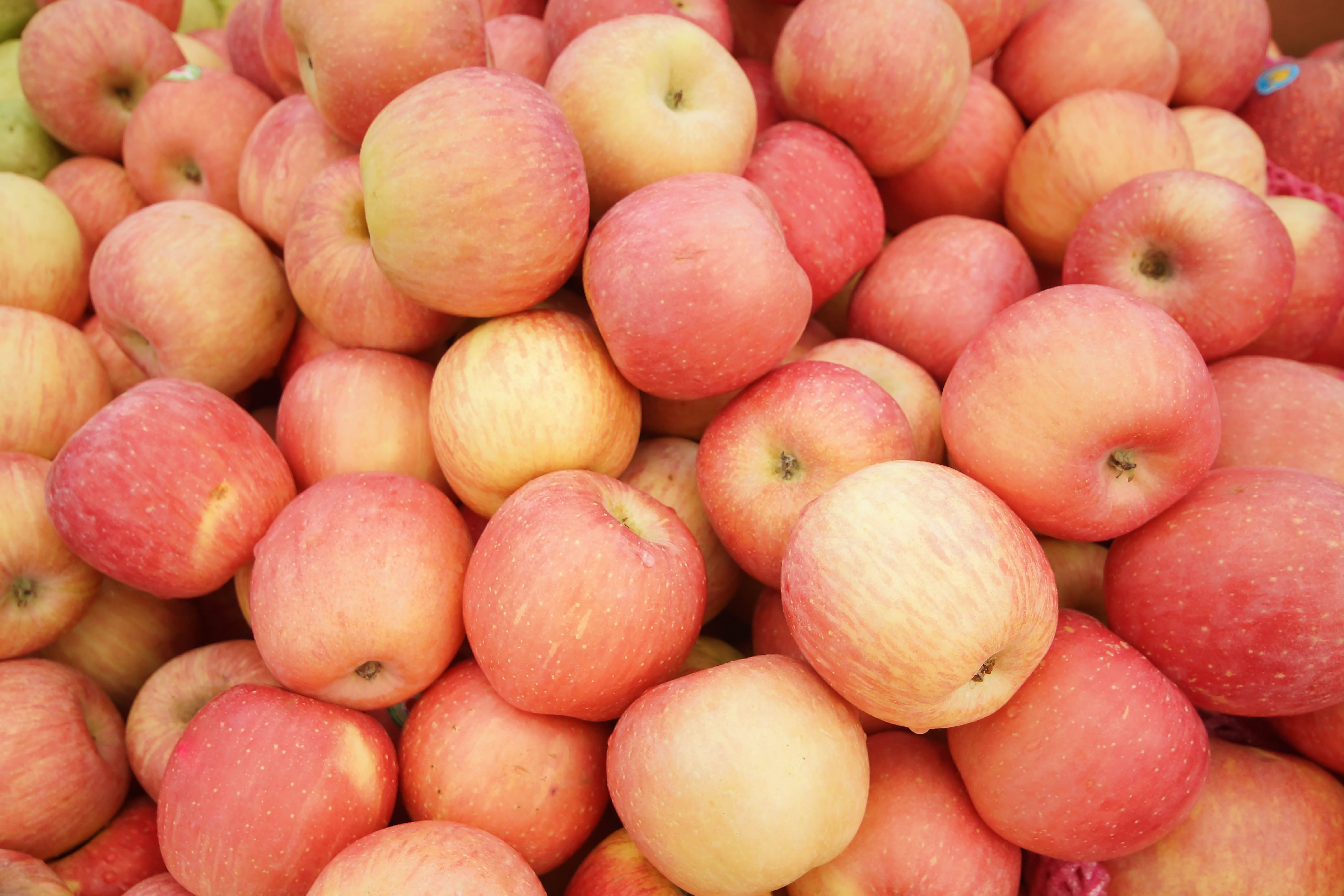Hyperspectral Images of Fuji Apples Used as Predictive Data for Fruit Bruise Area
While this technology has been frequently deployed in recent years to evaluate fruit quality, relatively few studies have examined such parameters as variation, damage time, and damage degree.
Researchers at Shandong Agricultural University in Tai’an, China conducted a series of experiments on store-bought Fuji apples, intentionally bruising the otherwise unblemished fruits and allowing them to rest for various intervals, to simulate bruises that occur during picking, packing, and transport, and to predict how quality is affected by bruise area (cm2), damage time (h), and damage height (cm) (1). Spectral data in a wavelength range of 376 to 1011 nm were collected via several methods.
A pile of fuji apples | Image Credit: © weerapat1003 - stock.adobe.com

The findings of these six authors, published in 2023 in the journal Agriculture, aimed to expand the use of hyperspectral imaging technology to provide more detail on the variation law of fruit bruise area, as well as the influence law of damage degree and damage time (1). Competitive adaptive reweighted sampling (CARS) and the L1 parameter and Pearson correlation coefficient methods were used to perform the wavelength selection, while prediction of bruise size was attempted using partial least squares (PLS), artificial neural network (ANN), and support vector machine (SVM) models.
To perform their experimentation, the authors purchased red Fuji apples from a supermarket, all measuring 8–9 cm in diameter with hardness of approximately 7.5 kg/cm2 and typical sugar content of 16.1% (1). A test bench was constructed upon which the apples were connected to an electromagnet with 25-mm metal spheres, which lost magnetic force by power failure at controlled heights of 20–70 cm, in increments of 10, causing the spheres to freefall and bruise the apple. Each test group was repeated eight times, the researchers said, with hyperspectral image data collected after rest times of 1, 6, 24, 72, and 120 h.
The authors then went on to describe the approaches they took to extracting the feature wavelengths that were related to the detection target for modeling analysis, based on a standard image size of 696 × 520 × 128 pixels (1). The CARS algorithm, they said, screened out 11 wavelengths, and was used to build the PLS regression model. However, comparing that model to ANN and SVM, PLS was considered the least accurate—which indicated to the researchers that the correlation between apple bruise area (in cm2) and hyperspectral data was not simply a linear relationship.
The highest accuracy of the combined methods was judged to be CARS + ANN, which registered a root mean square error (RSME) of 0.1150 and coefficient of determination (R2) of 0.8675 (1). Furthermore, the research team optimized the ANN model using the sparrow search algorithm (SSA), which yielded a root mean square error of prediction (RSMEP) of 0.0743 and an R-value of 0.9739, improving the accuracy of the model, according to the team.
Altogether, the specificity of the data provided by wavelength selection performed with competitive adaptive reweighted sampling, combined with an artificial neural network, established a correlation between spectral information and the bruise area (cm2), damage time (h), and damage height (cm) of Fuji apples. The authors suggest that their research may have future value for fast and nondestructive prediction of injury to other fruits in their selection and transport (1).
Reference
(1) Zhang, Y.; Li, Y.; Han, X.; et al. A Study on Hyperspectral Apple Bruise Area Prediction Based on Spectral Imaging. Agriculture 2023, 13 (4), 819. DOI: 10.3390/agriculture13040819
Childhood Obesity Serum Samples Analyzed Using Fourier Transform Infrared Spectroscopy
April 9th 2024A group of scientists led by Zozan Guleken of the Gaziantep University of Science and Technology in Gaziantep, Turkey looked into the blood serum composition of childhood obesity (CO) tissues using Fourier transform infrared (FT-IR) spectroscopy.